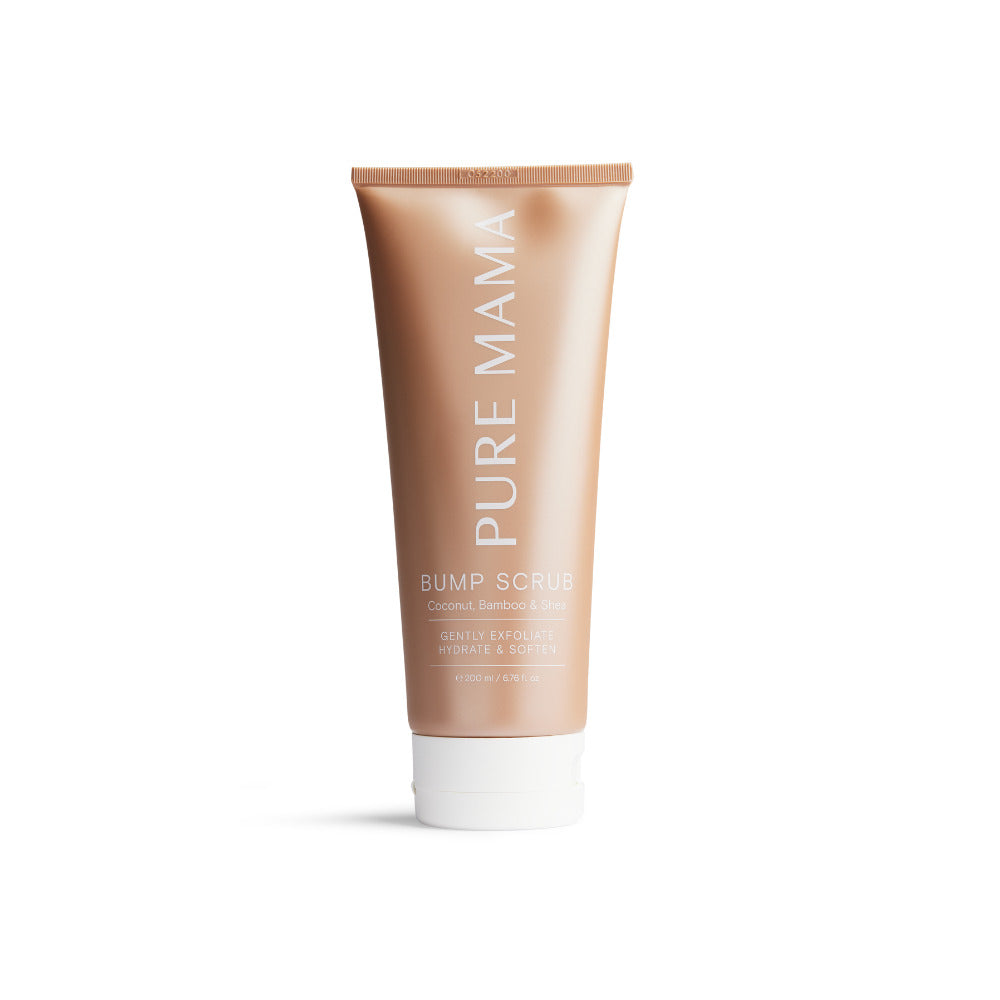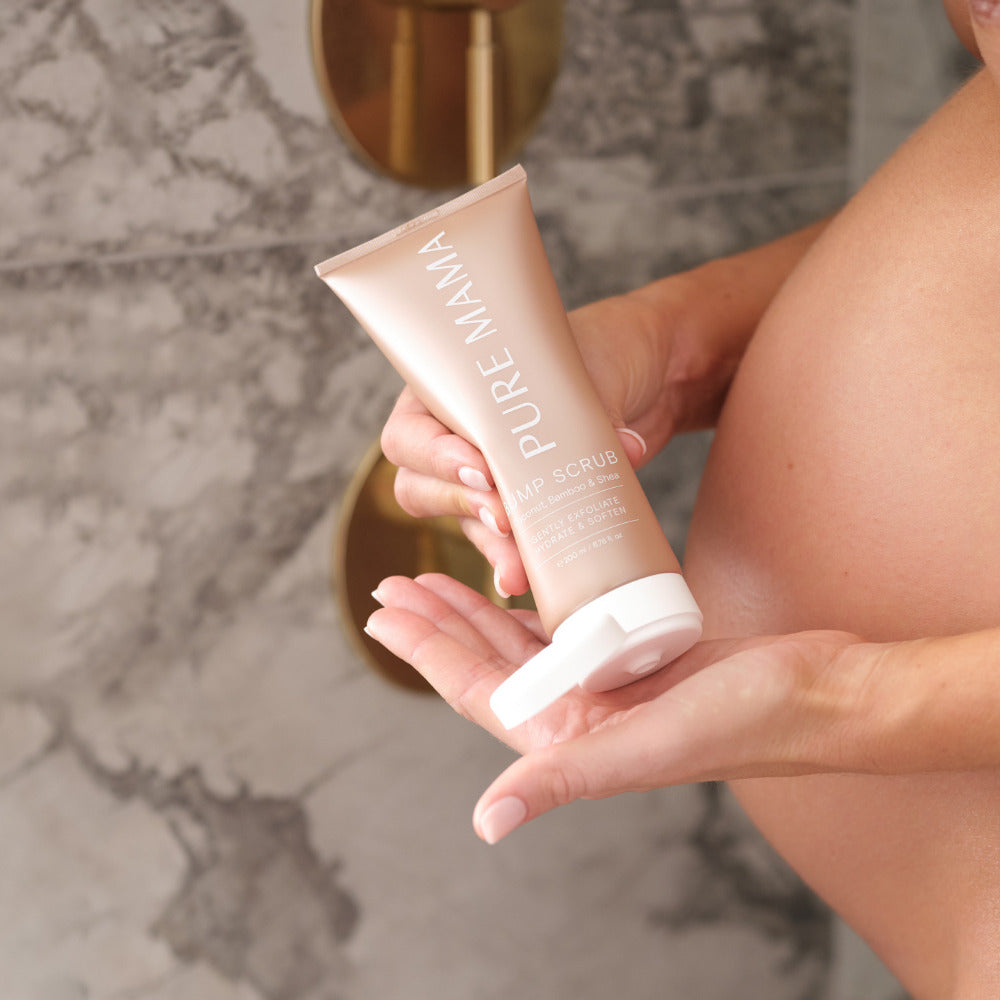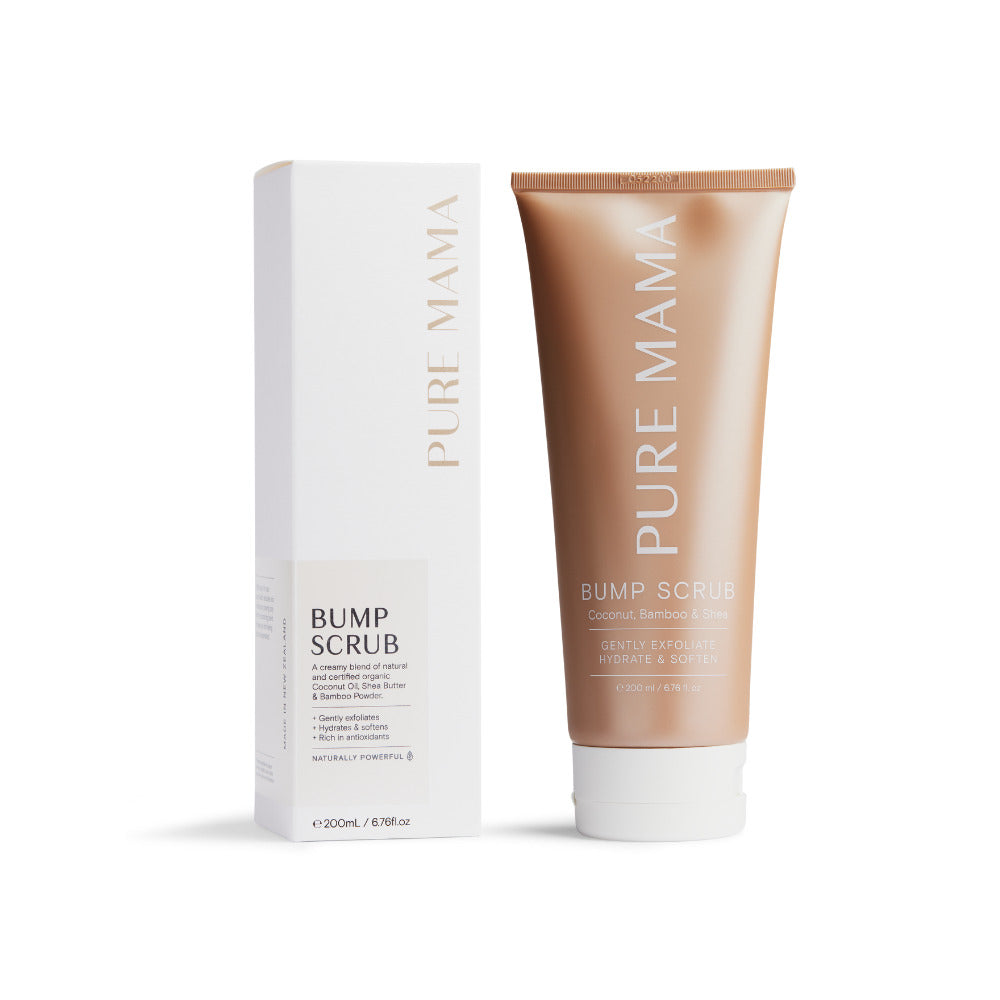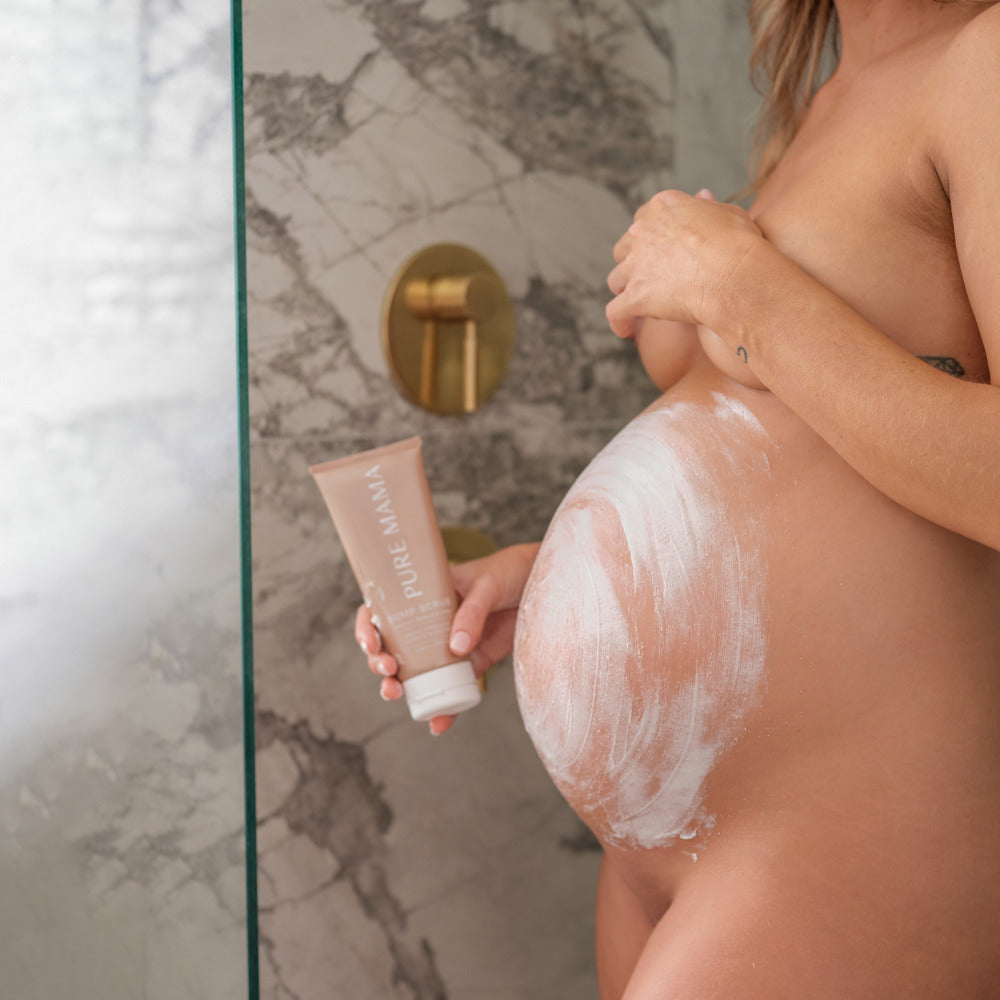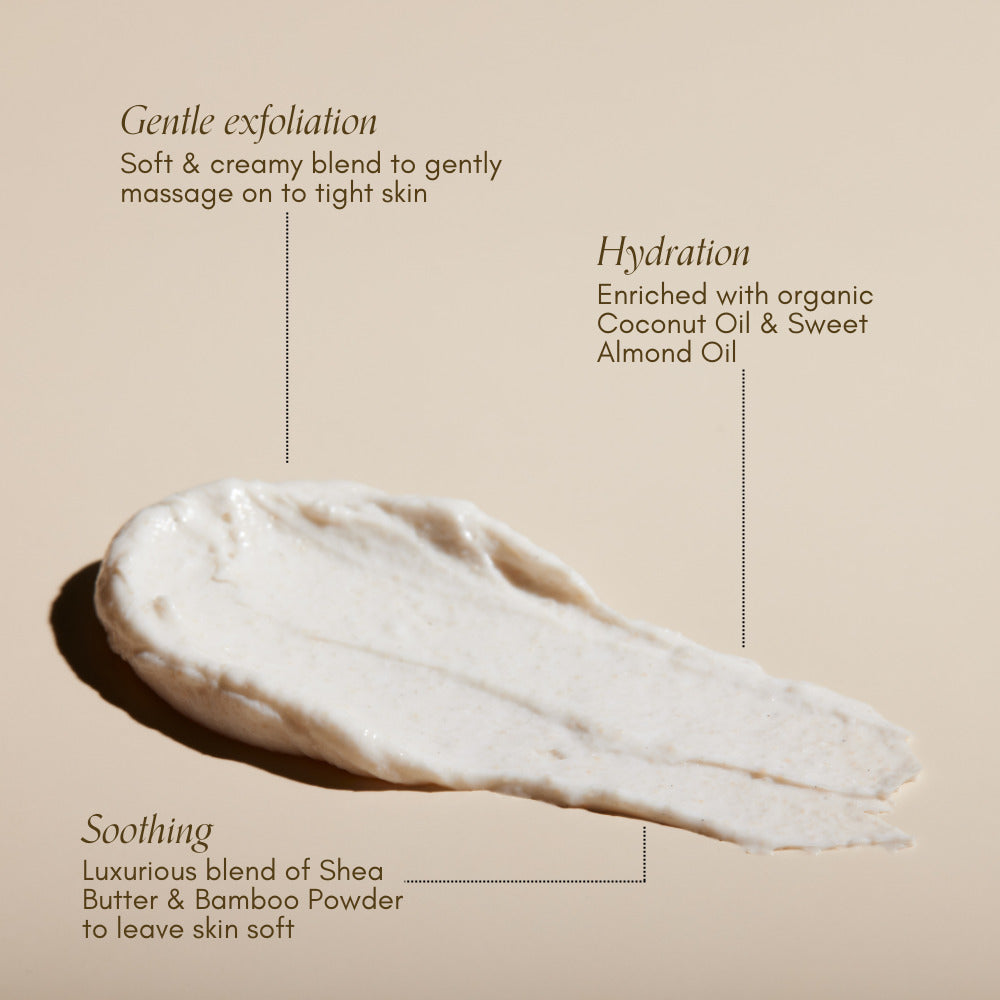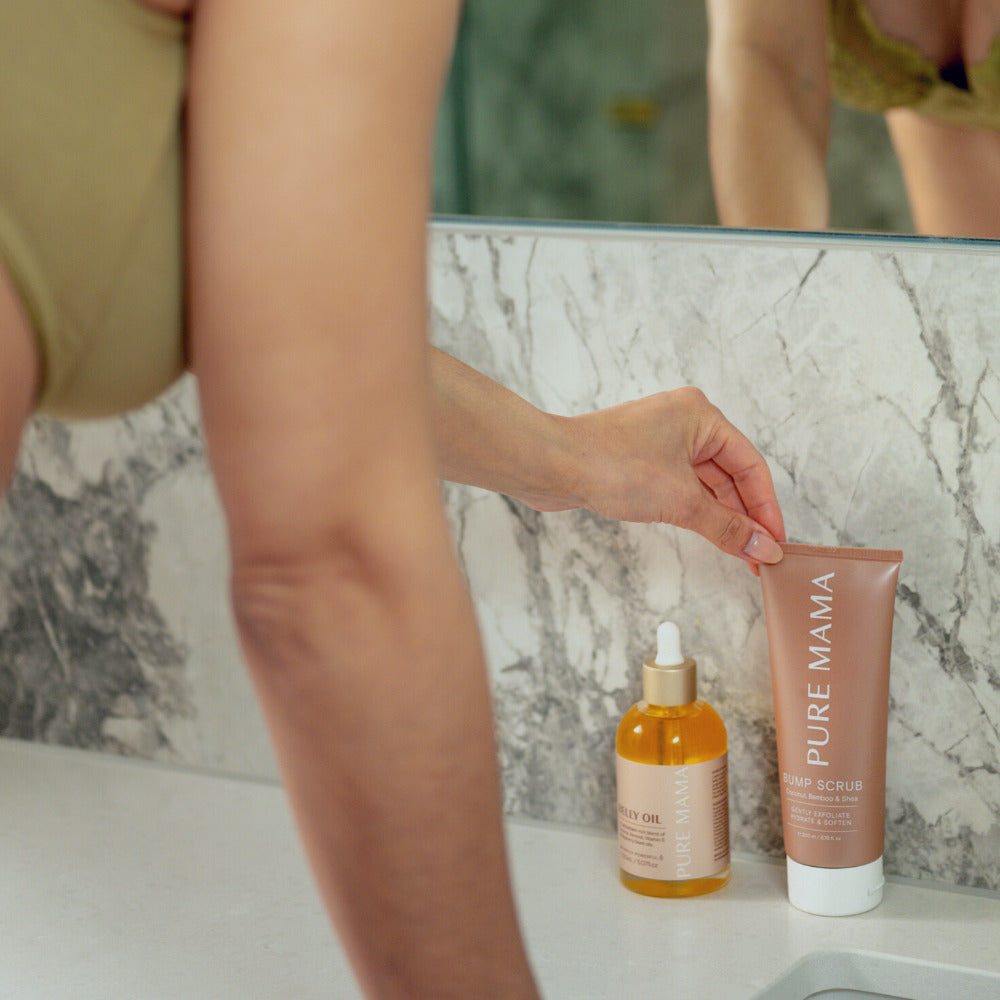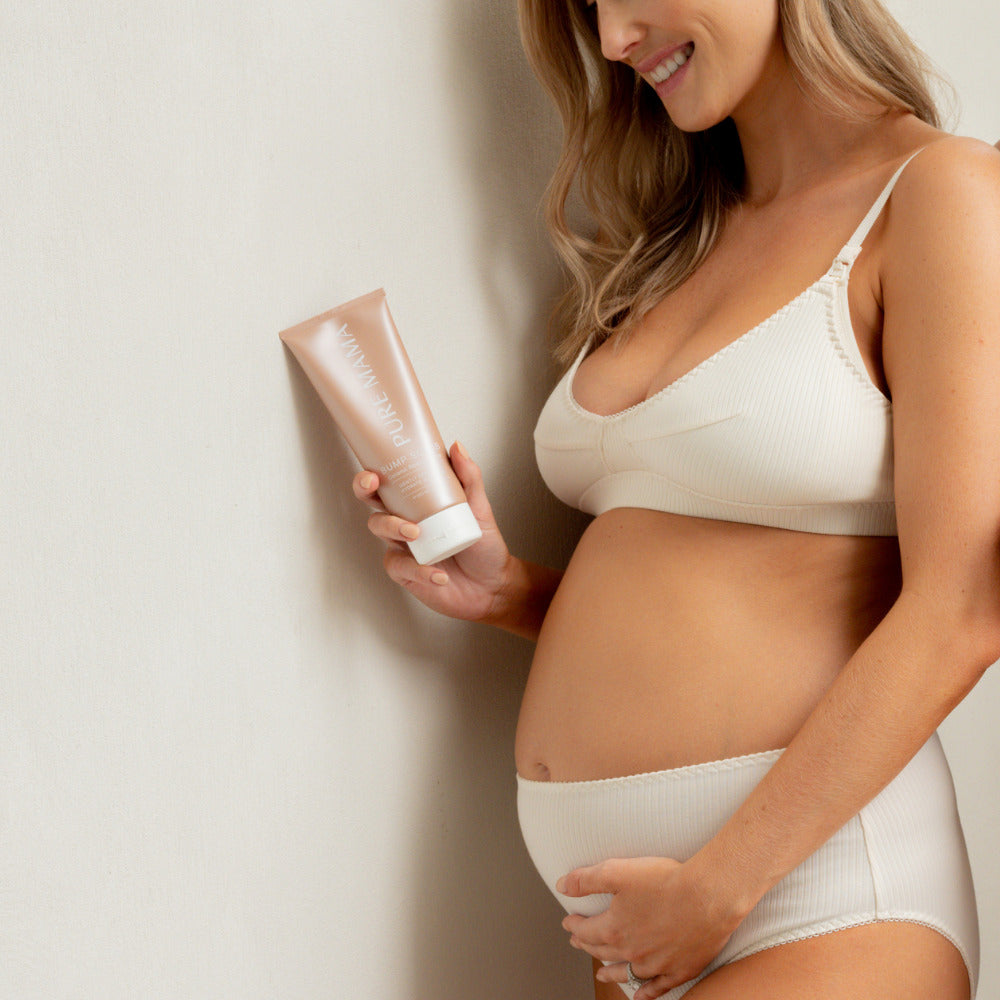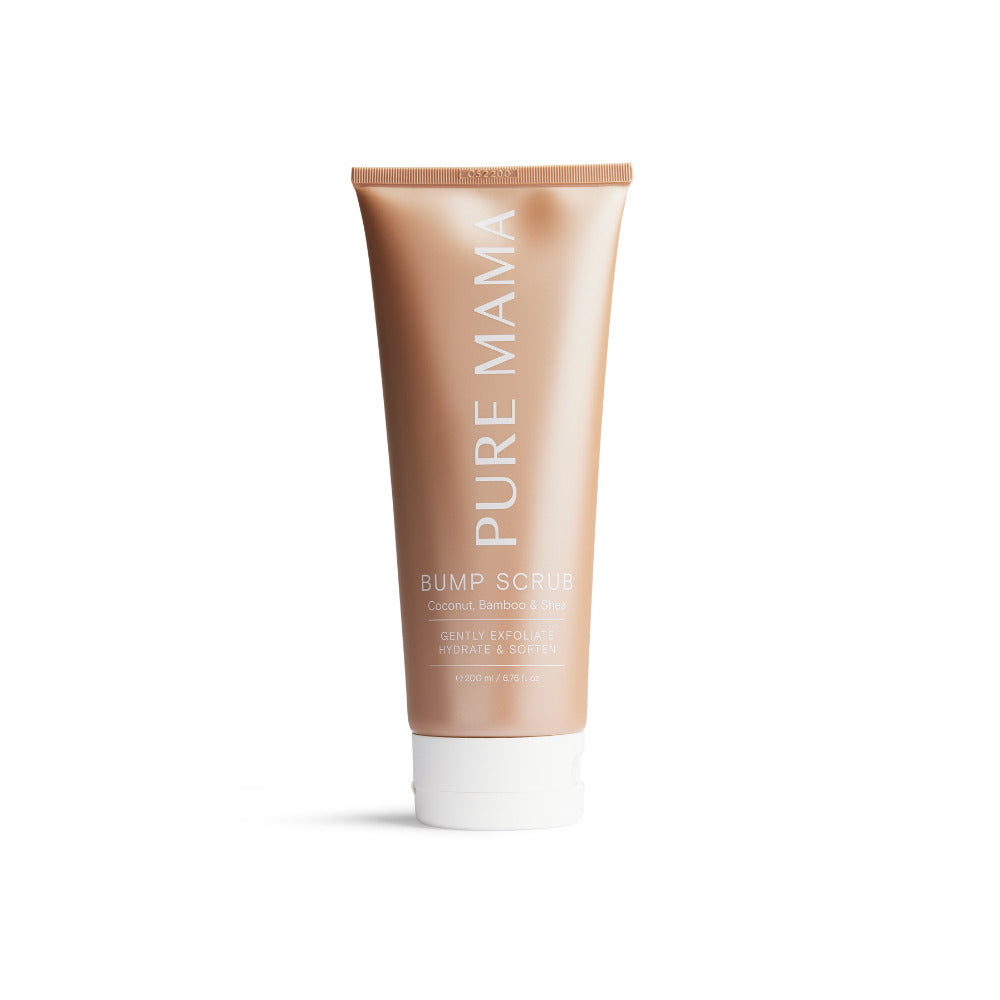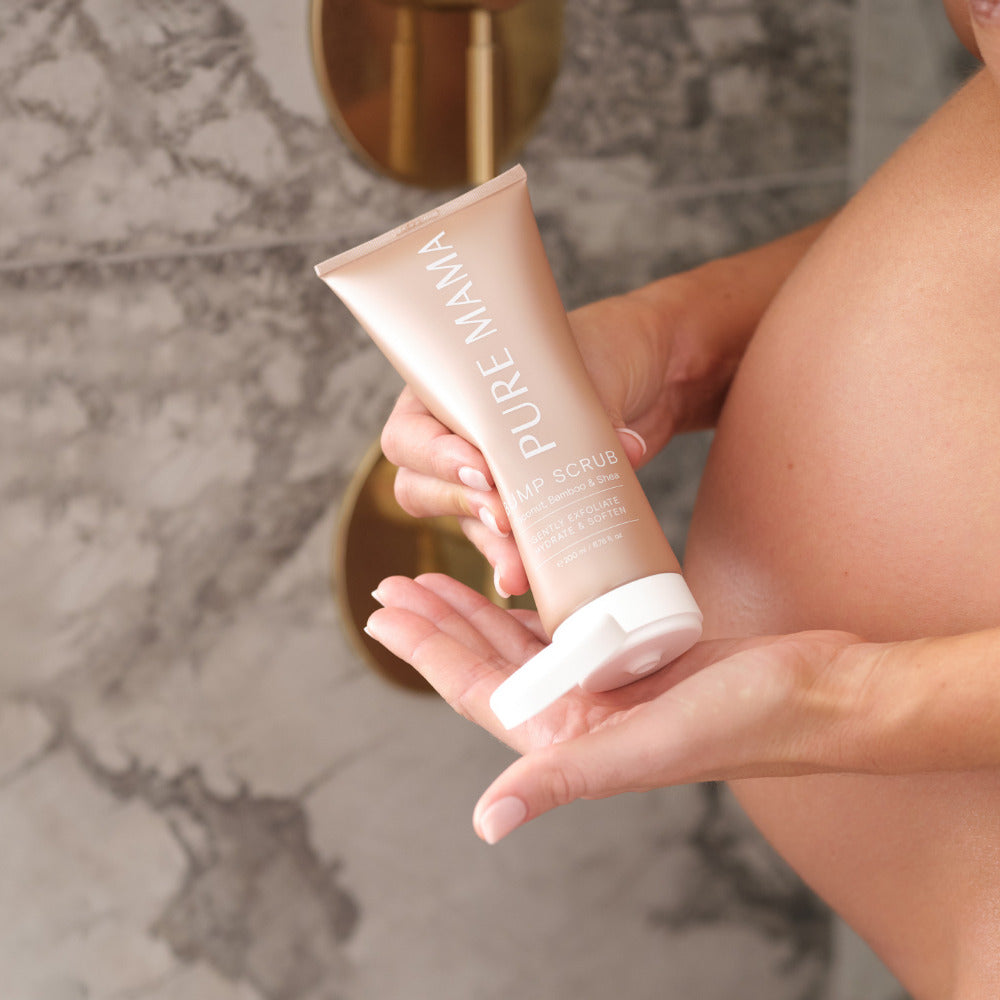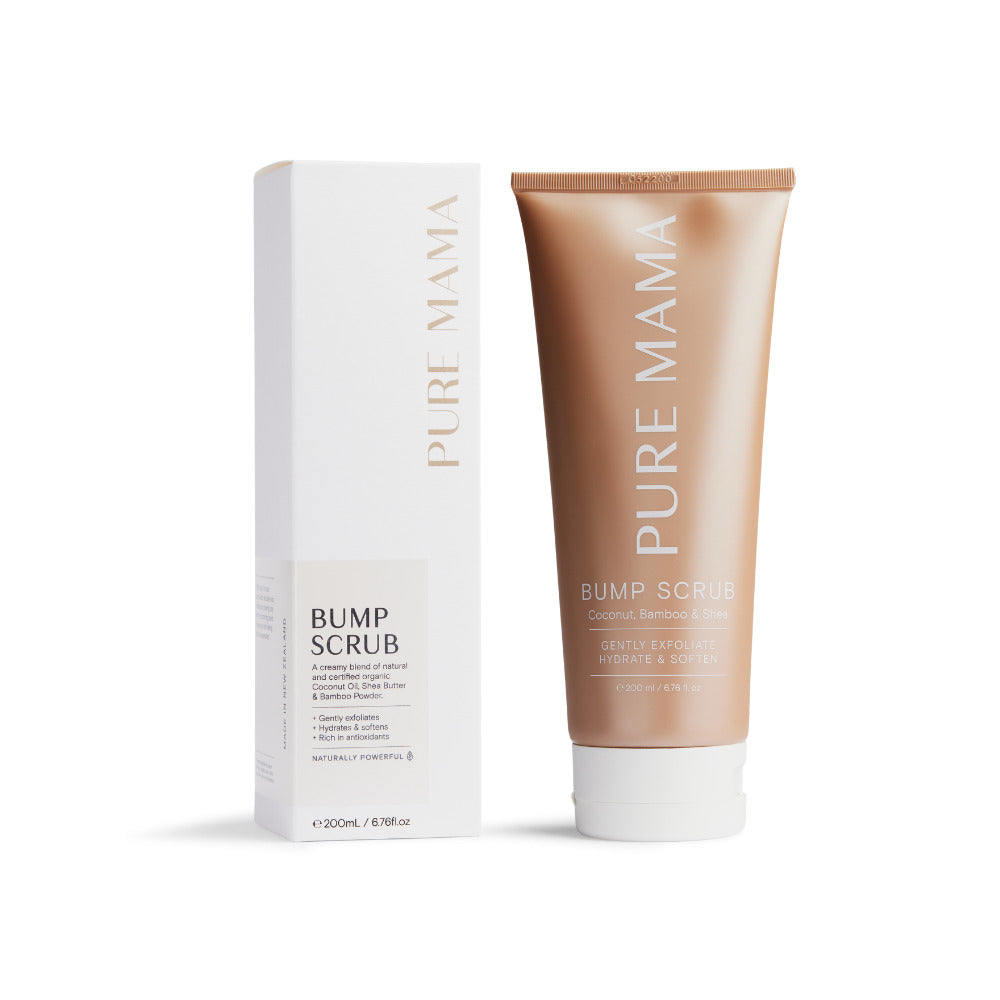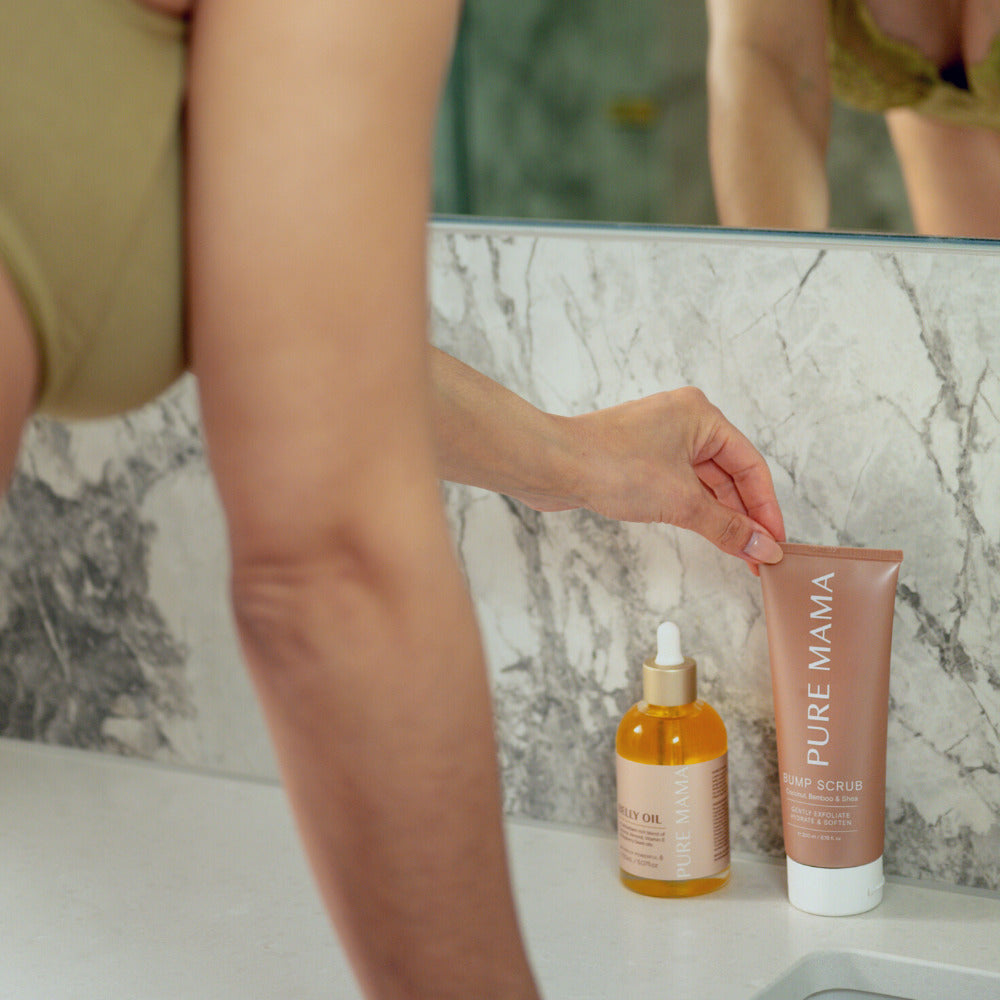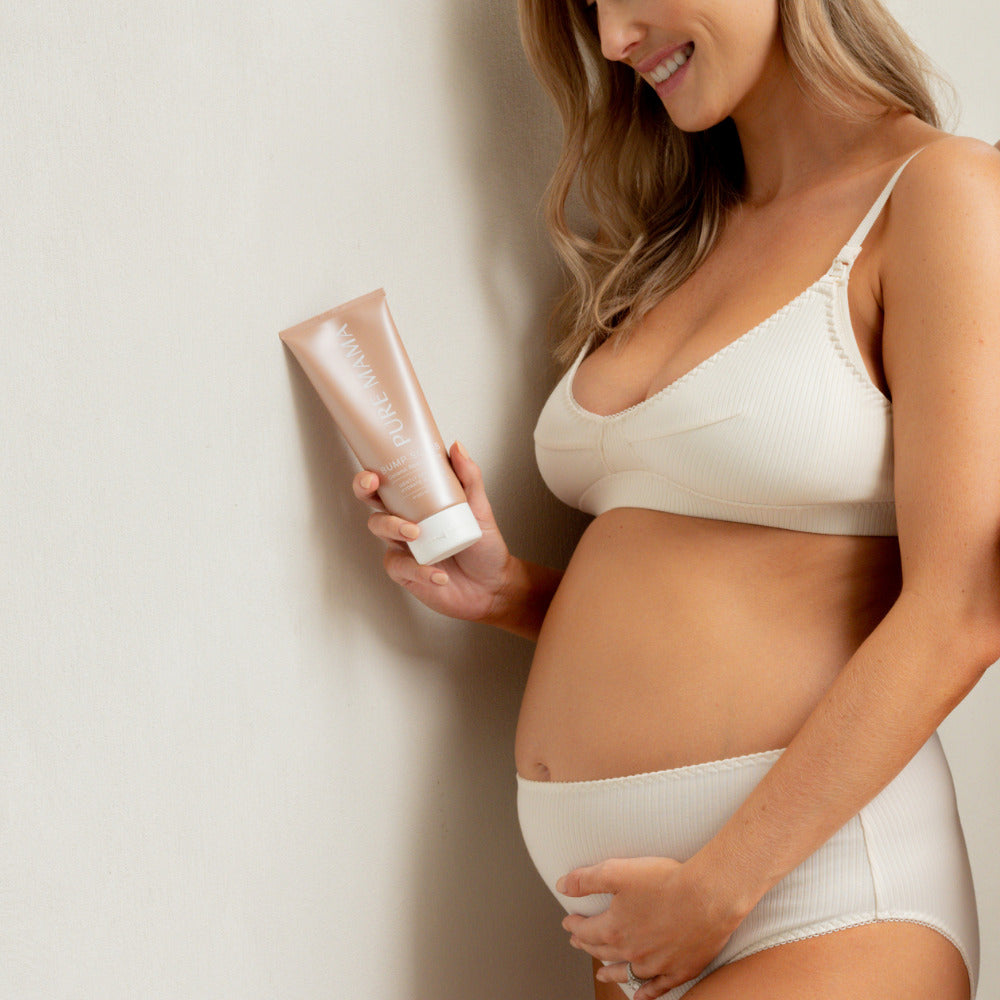Body Scrub
Body Scrub
SKU:PMBS01
Clothing Prem to 18 Months
| Size | Age Guide | Weight | Height |
|---|---|---|---|
| Premature | Premature or Small Newborn | Up to 4Kg | Up to 55cm |
| Newborn | 0-3 months | 4-6Kg | Up to 62cm |
| 3 Month | 3-6 months | 6-8Kg | Up to 68cm |
| 6 Month | 6-12 Month | 8-10Kg | Up to 76cm |
| 12 Month | 12-18 Month | 10-12Kg | Up to 84cm |
| 18 Month | 18-24 Month | 12-14Kg | Up to 92cm |
Clothing 2 to 6 Years
| Size | Age Guide | Height | Chest | Waist | Hip |
|---|---|---|---|---|---|
| 2 Year | 2-3 Years | Up to 100 cm | 56 | 51 | 58 |
| 3 Year | 3-4 Years | Up to 105 cm | 58 | 53 | 60 |
| 4 Year | 4-5 Years | Up to 110 cm | 60 | 55 | 62 |
| 5 Year | 5-6 Years | Up to 115 cm | 62 | 57 | 64 |
| 6 Year | 6-7 Years | Up to 120 cm | 64 | 59 | 66 |
Beanie Size Guide
| Size | Head Circumference | Age Guide |
|---|---|---|
| Premature | 31-35 cm | Premature or Small Newborn |
| Newborn | 35-40 cm | Newborn |
| Small | 40-43 cm | 3-6 Months |
| Medium | 43-47 cm | 6-18 Months |
| Large | 47-52 cm | 18-3 Years |
Sunhat Size Guide
| Size | Head Circumference | Age Guide |
|---|---|---|
| Newborn | 37-40 cm | Newborn |
| Small | 40-43 cm | 3-6 Months |
| Medium | 43-46 cm | 6-12 Months |
| Large | 46-49 cm | 12-24 Months |
| Xtra Large | 49-54 cm | 2-4 Years |
Sleep Pods Size Guide
| Size | Weight | Age Guide | Measurement(Back to Hem) |
|---|---|---|---|
| Newborn | 0-6 kgs | 0-3 Months | 60.5 cm |
| Small | 0-8 kgs | 3-6 Months | 66 cm |
Booties Size Guide
| Size | Age Guide |
|---|---|
| Newborn | 0-3 Months |
| Small | 3-6 Months |
| Medium | 6-12 Months |
| Large | 12-18 Months |
Pretty Brave Baby
| Foot Length (mm) | Insole Length (mm) | EU | UK | Age | INT |
|---|---|---|---|---|---|
| 95-104 | 110 | 16/17 | 2 | 0-6m | S |
| 104-114 | 118 | 18 | 3 | 6-12m | M |
| 114-123 | 127 | 19/20 | 4.5 | 12-18m | L |
| 123-137 | 142 | 21/22 | 5.5 | 16-22m | XL |
Pretty Brave 1st Walker
| Foot Length (mm) | Insole Length (mm) | EU | UK | Age |
|---|---|---|---|---|
| 114-120 | 125-128 | 19 | 3 | 1 yr |
| 120-126 | 132-135 | 20 | 3.5 | 1-2 yrs |
| 126-132 | 138.5-141.5 | 21 | 4.5 | 1-2 yrs |
| 132-138 | 145-148.5 | 22 | 5 | 2 yrs |
Crywolf Swim Nappy
| Size | Length (waist to crotch) | Crotch Width (side to side) |
|---|---|---|
| 0-1 yr | 1-2 yrs | |
| 37 | 38 | |
| 14.5 | 15.5 |
Crywolf Rash Suit
| Size | Length (back neck to crotch) | Chest (arm to arm) | Waist (side to side) | Sleeve (neck to cuff) | Neck Opening(diameter) |
|---|---|---|---|---|---|
| 6-12 Months | 1 yr | 2 yrs | 3 yrs | ||
| 40 | 42 | 44 | 46 | ||
| 25 | 26 | 27 | 28 | ||
| 24 | 25 | 26 | 27 | ||
| 30 | 31.5 | 33 | 34.5 | ||
| 13.25 | 13.25 | 13.8 | 14.3 |
In stock
Couldn't load pickup availability
Overview
Overview
A creamy and luxurious blend of organic Coconut Oil, Bamboo Powder and ground Pumice. This nutrient rich blend will gently slough away tired cells and leave your skin refreshed and replenished.
+ Gently exfoliates
+ Promotes skin cell regeneration
+ Helps prevent stretch marks and improve existing scaring
+ Intense nourishment and hydration
+ Rich in antioxidants
+ Gentle & non-allergenic
+ Safe for use during pregnancy
Formulated specifically for pregnant woman and suitable for use on all skin types. Safe to use pre and post-partum.
Please note all fragrances used are low allergen and 100% safe for use during pregnancy.
Technical Specification
Technical Specification
User Guide
User Guide
Delivery and Returns
Delivery and Returns
- Delivery: Free within NZ on orders over $100 (excluding bulky items) or $8 standard shipping
- Returns: Accepted within 14 days of receipt with proof of purchase
- Some items are excluded from returns including sale items, hardware, car seats, prams, monitors and personal items - please click here for the full list.
Share this product
Recently Viewed Products
Related Blogs
Mindful Meal Prep for Expectant Mums
In today’s busy modern society, the importance of sitting down together as a family at meal times and eating together and sharing about your day is a lost tradition for many. It is instead often a time that is busy, chaotic, and full of distractions with parents and children eating dinner at different times. There has been a plethora of research conducted around the benefits of family meal times, these benefits are said to include reduced rates of obesity, that adults tend to eat more slowly and often consume less food because they are engaged with other family members and discussion. This leads to less fast-paced mindless eating, chewing food adequately, and time for satiety ques to signal you are full more effectively. Something as simple as slowing down at meal times and chewing food effectively is an incredibly powerful health habit as this allows for the first phase of digestion to happen more efficiently. Cephalic phase digestion, meaning ‘of the head’ occurs at the sight, smell and taste of food and results in the excretion of approximately 20% of the gastric secretions required for digesting foods. Being mindful to slow meal times makes a huge difference in allowing the body adequate time for `these digestive phases to take place, chewing food is an incredibly important part of this process as it not only begins the mechanical breakdown of food but allows foods to be effectively mixed with saliva that is full of enzymes required to break down and digest foods. As a busy mum of four myself, I admit at times that when dinner rolls around at the end of a long day it feels like a chore, and can feel like a ‘job’ that I just want to be over as fast a possible. I have become aware that when I approach meal times in this way I end up feeling more stressed and don’t take the time to cook meals that are as nutritious as I would like, often resulting in me feeding the kids first which almost always leaves them not eating much of their dinner. My kids also don’t wind down as well when we approach meal times in this way and can easily flow on to a more challenging bedtime. In contrast, when we cook and eat together as a family, I usually feel less stressed, my children feel a sense of pride in having helped, and because I have put more thought into that meal time its generally a nutritionally superior meal. I almost always find the kids will eat more of their dinner and be far less fussy when meal times are approached in this way. I also notice my children are more relaxed at bedtime when we have had a relaxing family dinner together also. The research has also indicated that eating together builds stronger family relationships as it allows you all to come together and discuss your day, and feel connected and heard which helps to build a stronger sense of belonging which is thought to build self-esteem. Children learn through an example so role modeling good eating habits and table manners provides a great learning opportunity. As I always say aim for progress, and not perfection when it comes to health, if family meal times are not something that you currently do often in your house aim to implement a day a week and build on that. Don’t let it be a source of stress or guilt but instead a new fun tradition to start as a family. In my next blog, we will take a look at fun ways to get kids in the kitchen to teach them the valuable life skill of cooking. Kylie Stowe @melawholefoods Veggie loaded meatballs with salad and kumara wedges Serves 4 Meatballs 400 grams of prime minced beef 1 grated carrot 1c of thinly sliced baby spinach 2 cloves of crushed garlic 1 egg 4 tbsp of grated parmesan 2 tbsp of almond flour 1 tin of Ceres Organics Cherry Tomatoes Handful of freshly chopped thyme Kumara wedges 4 small kumara cut into chunky wedges Drizzle of olive oil Seasoning Side salad 4 cups of salad greens 1c of halves cherry tomatoes 4 tbsp of toasted pumpkin seeds 4 diced gherkins ½ a diced cucumber ½ a diced capsicum Drizzle of balsamic vinaigrette Method Preheat the oven to 180c fan bake Combine and mix through all of the ingredients for the meatballs (besides the tinned tomatoes and thyme) shape into golf ball sized meatballs. Mix the tinned tomatoes and herbs then pop in the fridge while you prepare the kumara wedges. Toss the kumara fries in oil and seasoning. Line a shallow baking dish with baking paper then evenly arrange the kumara wedges and put into the oven. Remove the meatballs from the fridge, lightly brown in a cast iron pan and top with the tomato and herb mixture. Put into the oven. Bake both for approximately 20 minutes depending on your oven. While the kumara and meatballs are baking combine the salad ingredients. I like to serve mine with a dollop of coconut yogurt. Enjoy!
Learn moreExercising while pregnant, yay or nay?
Should you exercise while pregnant? Optimise health for you and baby by keeping fit For the majority of women, pregnancy will mean being uncomfortable, one way or another. Research shows that energy expenditure during pregnancy is at the upper limit of what humans can maintain physically — it’s hard work. It’s no surprise that lots of women find it difficult to keep on exercising throughout this – especially when you already have kids running you ragged. But exercise is important for you and your baby’s health. The American College of Obstetricians and Gynecologists (ACOG) recommend that expectant mums try to complete half an hour of moderate exercise every single day. Is it safe to exercise during pregnancy? Yes. In general, if you were physically active before your pregnancy, you can continue exercising as long as it’s comfortable. But – and this is a big but – pregnancy is not the time to exercise for weight loss. Your goals should be about maintaining your fitness and keeping your muscles in tune, so you’re ready for birth and those early newborn days. Benefits of exercise when pregnant Even if the goal of 30 minutes a day seems unobtainable, try to do something. Here’s why it’ll be worth the effort. You’ll: Be comfier: exercise helps to minimise backaches, bloating, swelling and constipation Stay healthier: exercise can help prevent and control gestational diabetes Have more energy Feel happier Cope with the weight of that big belly better, with improved muscle tone and posture Get better sleep Have an easier time in labour Find it easier to regain your fitness after the baby is born How to exercises safely during pregnancy If you already have an exercise regime, you may not be able to complete it at the same intensity as before. That’s to be expected. Here, we have a variety of options for low-impact fitness. Swimming – Low to no-impact, swimming lets you exercise without feeling the added weight of baby. You’ll relieve stress on joints, alleviate nausea and sciatic pain, and help to reduce water retention. If you’re not a swimmer, try aqua jogging. Just be gentle on yourself and don’t jump or dive into the water. Your baby can’t handle the bubbles that are created inside when you change altitude underwater. Walking – Probably the easiest and cheapest form of exercise is walking. You can do this right up until your due date, you can go as quickly or slowly as you like, and you don’t need any special gear. If you have kids already, walking to the park is a great way to fit exercise into your busy schedule. Running – If you’re already a runner, it’s fine to continue during pregnancy. Whether it’s on a treadmill or outside, whatever you’re used to and feel comfortable doing is fine. However, just be aware that your ligaments and joints will loosen during your pregnancy, which can put you at risk of injury. Group fitness classes – Low-impact workouts are great, from Body Balance to Zumba. They pump your heart rate up, get the blood flowing, and make you feel great. However as your body changes, so does your center of gravity. This can make balancing difficult and jumping can be challenging. Ask the instructor for alternative moves that will accommodate your pregnancy. Excercycling – Using an exercycle is great during pregnancy. It’s low-impact, you can pedal with as much resistance as is comfortable, and with little risk of a fall. You can do spin classes if you tell your instructor you’re pregnant and avoid pressure and standing. Martial arts, kickboxing, pole dancing – If you have been doing these activities for a long time already, it’s fine to continue doing them for as long as it’s comfortable. Avoid impact/pressure to the stomach and stop if you feel uncomfortable. HIIT (High Intensity Interval Training) – This can be very intense, so it’s not something you should be trying for the first time during pregnancy. If you’ve been doing it for a while, make some modifications and you should be fine. Avoid jumping and high-impact moves, and use lower weights than normal. Be careful with anything that involves balancing, and stop if you feel short of breath or dizzy. Outdoor sports – Give skiing and snowboarding a miss, because a fall could be catastrophic. Things like ice skating and horseback riding may be fine for the first two trimesters, but once your balance is affected they may become difficult. Pilates, yoga and barre – These are ideal pregnancy exercises. The practitioner should be able to tailor them to suit your needs. Focus on your core, pelvic tilt and floor exercises, core strengthening and flexibility. Look for classes that can be adjusted for pregnant women, as these will require less balance, more breathing focus and appropriate strength exercises. Weightlifting – This is a great way to increase strength and tone. Use lighter weights for more reps and it may be more comfortable to use machines rather than free weights, to help control movements and limit injury. Exercises to avoid Most things are safe, as your baby is nestled in protective fluid in the amniotic sac. However you should avoid: High-impact exercise that you’re not used to Lying flat on your back, as this may put pressure on blood vessels and reduce blood flow Contact sports, such as rugby Skiing, snowboarding, ice hockey or gymnastics, where there is a high risk of falls Scuba diving, as the baby has no ability to avoid gas embolism Anything in high altitudes, as you are more at risk of altitude sickness Exercising in high temperatures, as you may overheat the baby Get moving, mama! If you’re pregnant, exercise is one of the best things you can do for your and your baby’s health. If you’re already active you can continue doing what feels comfortable, unless your sport of choice is high intensity or potentially harmful to baby. Do warmups and cool downs to give you time to adjust and take notice of how your body feels. Adapt exercises to lessen the impact on your body, but in general you can do what feels good. If unsure, please seek advice from your healthcare provider. Make sure you eat enough, drink enough water, and listen to your body. Give your baby the best possible growing environment and the best entry into this world.
Learn morePregnancy stages – First Trimester
Welcome, little bean Here’s what happens during your first trimester of pregnancy. You’re pregnant! Congrats – this is both an unbelievably special moment, and one that’s totally ordinary. It should come as a comfort to you that while this may be your first time pregnant, there are billions of women who have gone before you. The first thing to remember about pregnancies is that each is unique – our founder Jane Anne had 14 children and tells us that none of her pregnancies were the same. There are, however, some things you can predict. Most women experience similar things at similar stages, and you can expect your baby to grow and develop at predictable periods. The first trimester begins at the official date of conception, which oddly enough is counted from about two weeks before you actually conceive. That’s because doctors count from the date of your last period – you’ll have ovulated and conceived about two weeks after, but there’s no way of knowing exactly when. What happens to your body? During the first trimester, your baby’s development is at its most visibly startling, developing from a cluster of cells into something that looks pretty much human in a matter of weeks. That takes a lot of effort – and hormones – on the part of your body. While most women won’t start to show until the second trimester (and a bit earlier if this isn’t your first pregnancy), many women feel very pregnant very quickly – bloat can look a lot like a pregnancy belly. Some other symptoms you may experience are: Feeling really tired Sore and swollen breasts and nipples Morning sickness (that actually appears around the clock!) Food cravings or aversions Mood swings Constipation Needing to pee more Headaches Indigestion Weight gain or loss Such glamour! But don’t worry – this is only a short-lived period in your pregnancy. It gets easier. The best way to manage it is to stay as healthy as possible. Eat and sleep well, and get as much gentle exercise as you can manage. That means you may need to go to bed earlier, cut out foods that make you queasy, eat smaller meals more frequently, and shift away from high-impact exercises to walking, swimming, and yoga. For many women, morning sickness peaks in weeks 8 and 9 and then will begin to taper off – along with their other symptoms – as they head into the second trimester (counted from 12 weeks). What’s going on in there? Your baby is getting busy! These early weeks are when your baby is building all the components of its body. By week 12, your baby will look like a person (just with odd proportions). At four weeks, your baby is still called an embryo. At a teeny tiny 0.5cm long, your baby has already begun work on its brain, spinal cord, and heart. Four little buds have sprouted, which will eventually become legs and arms. By week eight, your baby is 2.5cm and is now officially a fetus. All major organs are under development (hello, tiny lungs) and the heart has begun to beat. Little details are underway too – fingers and toes (with minuscule nails!) sex organs and facial features. The end of the first trimester is marked by the beginning of week 12. At this point, your baby is about 7.5cm long, with nerves and muscles that work together (which is why some parents catch their little one sucking a thumb on scans!) Eyelids close and won’t open again until about week 28. If you could peer inside, you’d see that your baby looks quite a lot like… a baby! The head, however, is still a lot bigger in proportion to the body and the arms and legs are still quite short. What happens next? Read about your second trimester here.
Learn moreBaby Comforters: What Are They, and How To Introduce Them
There’s something very special about watching your baby snuggle into their favourite little blanket or soft toy. For many little ones, a comforter (or blankie) becomes more than just a bedtime accessory - it’s a trusted friend that brings a sense of calm and reassurance through every new stage of growing up.
Learn more

